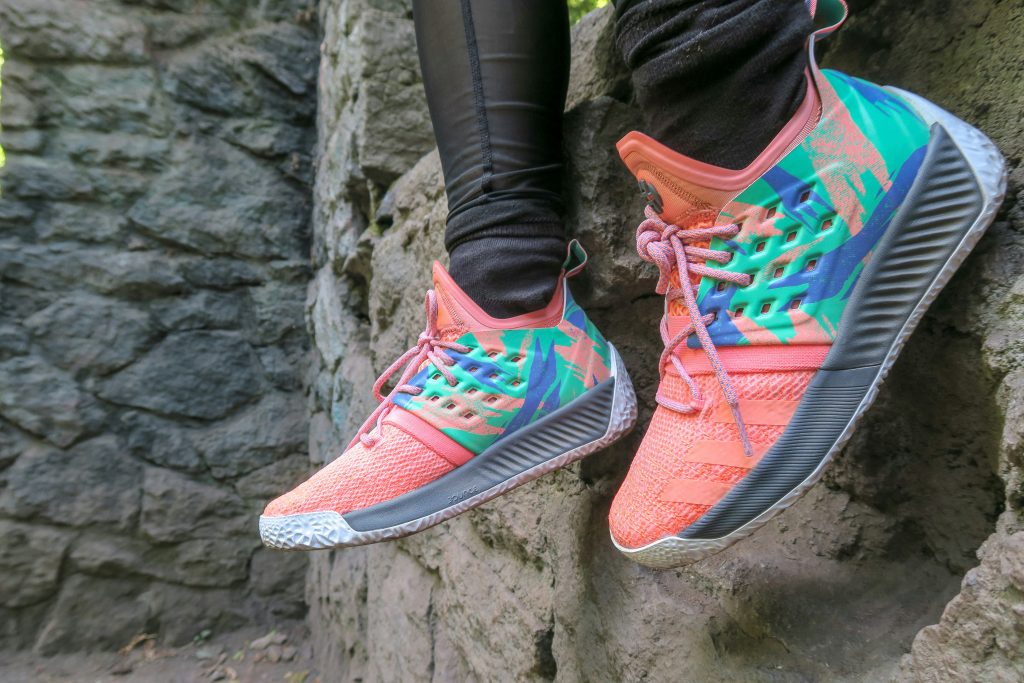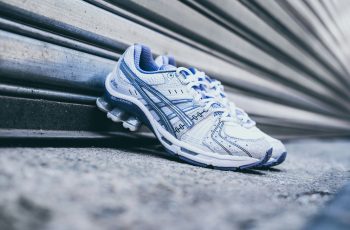Hey there! Ready to take a jog down memory lane? In this article, we’ll be exploring the fascinating journey of women’s running sneakers, tracing their evolution from the past to the present. From simple canvas shoes to cutting-edge technology, you’ll discover how these essential footwear have not only transformed in style but have also played a significant role in empowering women to conquer new fitness goals. So, lace up your sneakers and get ready to discover the amazing history behind the evolution of women’s running shoes!
The Importance of Women’s Running Sneakers
When it comes to running, the right pair of sneakers can make all the difference. Women’s running sneakers are specifically designed to cater to the unique needs and biomechanics of female runners. From performance enhancement to injury prevention, wearing proper running sneakers is crucial for women who want to reach their running goals.
How running sneakers impact performance
Running sneakers play a key role in enhancing a woman’s performance on the track or trail. They provide cushioning and shock absorption, reducing the impact on joints and muscles. This not only minimizes the risk of injury but also allows for a more comfortable and efficient stride. The right pair of running sneakers can help improve stability, promote proper foot alignment, and enhance overall running mechanics.
Why women’s running sneakers are specifically designed
Women have unique biomechanical differences compared to men, affecting how they run. Women tend to have wider hips and a greater angle of their quadriceps, which can result in more inward knee rotation during running. As a result, women’s sneakers are designed to provide additional support and stability in the midfoot and heel areas. They also have a narrower heel and a wider forefoot to accommodate the shape of a woman’s foot more accurately.
The benefits of wearing proper running sneakers
Wearing proper running sneakers offers a multitude of benefits for women runners. Firstly, they provide a comfortable and supportive fit, reducing the risk of blisters, hot spots, and discomfort. The cushioning and shock absorption properties of running sneakers help to protect the joints from excessive impact, reducing the risk of stress fractures and other injuries. Additionally, properly designed sneakers can enhance energy return and promote efficient running mechanics, leading to improved speed and endurance.
Early Days: The Birth of Women’s Running Sneakers
The first women’s running sneakers introduced
The early days of women’s running sneakers trace back to the 1960s when women began to participate in organized marathons and road races. However, at that time, most women had to settle for unisex sneakers or men’s running shoes, as there were limited options designed specifically for women. It wasn’t until the 1970s that women’s running sneakers started to be produced by mainstream athletic shoe companies.
Features of early women’s running sneakers
The first women’s running sneakers featured basic designs with minimal cushioning and support. They were often made from canvas or leather materials, which lacked the breathability and flexibility required for intense running activities. These sneakers were also limited in color options and lacked the performance-oriented features that we see in modern running sneakers.
Challenges faced by early women runners
Women runners faced numerous challenges in the early days of the sport. Apart from the lack of dedicated running sneakers, societal attitudes and stereotypes often discouraged women from participating in long-distance running. Many female runners had to fight for equal participation rights and facilities at races. Despite these obstacles, pioneering women runners persisted and paved the way for the growth and development of women’s running sneakers.

1970s-1980s: The Rise of Women’s Running Boom
The impact of the running boom on sneaker development
The running boom of the 1970s and 1980s, marked by the increased popularity of distance running and the growth of women’s running clubs, played a significant role in the development and evolution of women’s running sneakers. The surge in demand for women’s running sneakers led athletic shoe companies to invest in research and technology to cater to the specific needs of female runners.
Innovative features introduced in women’s running sneakers
During this period, innovative features were introduced in women’s running sneakers to enhance performance and comfort. From improved cushioning systems to enhanced breathability and lightweight materials, these sneakers provided better support and fit for female athletes. The introduction of padded collars and tongues increased comfort, while new technologies like EVA foam and polyurethane midsoles offered added shock absorption and responsiveness.
Role of prominent women runners in shaping sneaker trends
Prominent women runners of the time, such as Joan Benoit Samuelson and Grete Waitz, not only influenced the popularity of women’s running but also had a hand in shaping sneaker trends. These athletes collaborated with shoe companies to create signature sneakers that addressed their specific needs and preferences. Their success on the racecourse and their endorsement of certain sneaker models significantly impacted the growth of women’s running sneakers.
1990s-2000s: Technological Advancements
Introduction of air cushioning and gel technology
The 1990s and 2000s marked a period of significant technological advancements in running sneaker design. This era witnessed the introduction of air cushioning and gel technology, which revolutionized the industry. These cushioning systems provided improved shock absorption and excellent energy return, allowing female runners to push their limits further while minimizing fatigue and risk of injury.
Enhanced support and stability features
Alongside cushioning advancements, the 1990s and 2000s also saw improvements in support and stability features. Sneaker manufacturers introduced technologies like medial posts and thermoplastic urethane shanks, which enhanced midfoot and arch support. These features were particularly beneficial for women with overpronation or flat feet, helping them maintain proper foot alignment throughout their runs.
The influence of fashion on running sneaker design
Running sneakers have not only evolved in terms of performance but also in their aesthetics. In the 1990s and 2000s, fashion trends began to influence running sneaker design. Sneakers came in a wider range of colors and stylish designs, appealing not only to athletes but also to fashion-conscious women. This shift in sneaker design made running shoes a more versatile choice for both athletic activities and everyday wear.

Present Day: The Era of Customized Running Sneakers
Tailored fit and individualized support
In recent years, there has been a growing emphasis on personalized and customized running sneakers for women. Shoe companies have introduced technologies that allow for a more tailored fit and individualized support. This includes features like customizable lacing systems, molded footbeds, and adaptable uppers that conform to a woman’s unique foot shape. These advancements ensure a more comfortable and supportive running experience.
The popularity of minimalist running sneakers
Another trend in present-day women’s running sneakers is the popularity of minimalist footwear. Minimalist sneakers offer a lightweight and flexible design, often with a lower heel-to-toe drop and less cushioning. This style of footwear aims to promote a more natural foot strike and allow greater sensory feedback while running. Many women have embraced minimalist sneakers for their potential benefits in improving proprioception and strengthening foot muscles.
Integration of smart technology in running sneakers
The advent of smart technology has made its way into the world of running sneakers. Many women’s running sneakers now come with integrated sensors and trackers that can measure performance metrics like distance, speed, and heart rate. This data can be synced with smartphone apps, allowing runners to track their progress, set goals, and analyze their running technique. The integration of smart technology provides valuable insights and motivation for women striving to improve their running abilities.
The Evolution of Materials and Construction Techniques
Transition from canvas to synthetic materials
In the early days of women’s running sneakers, canvas and leather were the primary materials used. However, as running sneakers evolved, there was a transition to synthetic materials like nylon mesh, synthetic leather, and various types of lightweight fabrics. These materials offered improved breathability, durability, and overall performance, making them ideal for the demands of running.
Impact of lightweight materials on sneaker design
The introduction of lightweight materials revolutionized sneaker design. Women’s running sneakers became lighter and more agile, allowing for greater ease of movement and increased speed. Lightweight materials also played a crucial role in reducing fatigue and improving running efficiency. Furthermore, these materials enhanced flexibility, ensuring that the sneakers moved with the runner’s foot, reducing the risk of discomfort or blisters.
Advancements in sole construction for better traction and shock absorption
The evolution of materials and construction techniques also brought advancements in sole design. Running sneakers now feature durable rubber outsoles with multidirectional tread patterns that provide excellent traction on various surfaces. Additionally, midsole technologies, such as air cushioning and gel capsules, offer exceptional shock absorption, reducing the impact on the body during each stride. These advancements in sole construction contribute to a more comfortable and secure running experience.

Trends in Color and Style
Rise of vibrant and bold color choices
In recent years, there has been a shift towards vibrant and bold color choices in women’s running sneakers. Sneaker brands have embraced a wide range of color palettes, catering to diverse style preferences. Women runners now have the opportunity to express their individuality and personality through their choice of running sneakers. The availability of vibrant colors adds excitement and motivation to the running experience, making it more enjoyable and visually appealing.
The influence of streetwear on running sneaker aesthetics
Streetwear culture has significantly influenced the aesthetics of women’s running sneakers. Sneaker brands have collaborated with streetwear designers and artists, resulting in limited edition and highly sought-after models. Running sneakers are no longer just performance-oriented; they have become a fashion statement, allowing women to exude style and confidence both on and off the track.
Collaborations with designers and celebrities
Collaborations with famous designers and celebrities have become a common trend in the world of women’s running sneakers. These collaborations bring a unique and fresh perspective to sneaker design, merging fashion and function seamlessly. Women can now choose from a wide range of sneaker collaborations, ensuring they have shoes that not only perform well but also reflect their personal taste and style.
Inclusion and Diversity in Women’s Running Sneakers
Expanding size ranges for all body types
Women’s running sneaker brands have recognized the importance of inclusivity and diversity. Many brands now offer an extensive range of sizes to cater to a variety of body types. This ensures that all women, regardless of their foot size, can find a running sneaker that fits comfortably and meets their specific needs. The availability of a broader size range promotes inclusivity within the running community and encourages women of all backgrounds to embrace running as a form of exercise and empowerment.
Addressing specific needs of diverse runners
Women runners come from diverse backgrounds and have varying foot types and conditions. Leading sneaker brands have taken steps to address these specific needs by offering a variety of sneaker models designed for different foot shapes, gait patterns, and running styles. This targeted approach ensures that women of all abilities and running goals can find a sneaker that caters to their biomechanical requirements and promotes optimal performance.
Promoting diversity in sneaker marketing and advertising
Sneaker brands understand the importance of diversity and representation in marketing and advertising. By featuring a variety of women of different ages, ethnicities, body types, and running abilities in their promotional materials, these brands celebrate the strength and diversity of the running community. This inclusive approach inspires women from all walks of life to participate in running and highlights the accessibility of women’s running sneakers for all.
Sustainability and Ethical Practices
Eco-friendly materials in running sneaker manufacturing
As sustainability becomes a critical concern, many women’s running sneaker brands are prioritizing eco-friendly materials in their manufacturing processes. These brands are incorporating recycled materials, such as recycled plastic bottles and rubber, into the production of their sneakers. By using sustainable materials, these brands aim to reduce their environmental impact while still delivering high-performance, durable sneakers.
Reducing carbon footprint in production and distribution
Another aspect of sustainability focuses on reducing the carbon footprint associated with the production and distribution of women’s running sneakers. Sneaker brands are implementing environmentally conscious initiatives such as using renewable energy sources in manufacturing facilities, optimizing packaging to minimize waste, and utilizing more sustainable transportation methods. These efforts ensure that women can make an environmentally responsible choice when selecting their running sneakers.
Ethical considerations in the supply chain
Ethics are an essential aspect of sustainable practices, and many women’s running sneaker brands are taking steps to ensure fair and ethical treatment throughout their supply chains. They work closely with manufacturing partners to ensure fair wages, safe working conditions, and adherence to labor standards. By prioritizing ethical considerations, these brands promote not only environmental sustainability but also social responsibility.
The Future of Women’s Running Sneakers
Advancements in material technology
The future of women’s running sneakers holds exciting possibilities in terms of material technology. Sneaker brands are continually researching and developing advanced materials that enhance performance, durability, and comfort. Innovations such as energy-returning foams, temperature-regulating fabrics, and responsive cushioning systems are on the horizon. These advancements aim to deliver even better running experiences for women, enabling them to reach their full potential.
Integration of artificial intelligence in sneaker design
Artificial intelligence (AI) is transforming various industries, and the field of women’s running sneakers is no exception. AI can analyze large amounts of data to provide insights into optimal design features that cater to a woman’s specific running style and biomechanics. Customized and personalized running sneakers made possible by AI algorithms can offer an unparalleled fit and performance based on an individual’s unique needs.
Embracing new trends while honoring the past
While the future of women’s running sneakers brings forth exciting advancements, it is essential to remember and honor the advancements made in the past. Sneaker brands will continue to embrace new trends in aesthetics, technology, and sustainability, but they will also pay tribute to the significance of those early sneakers that paved the way. Balancing innovation with respect for history will ensure that women’s running sneakers continue to evolve and meet the needs of all women runners, empowering them to achieve their running goals.
In conclusion, the evolution of women’s running sneakers has come a long way, from the early days of limited options to the present-day tailored fit and customizable features. Technological advancements, inclusion and diversity, sustainability, and the integration of smart technology have revolutionized the running sneaker industry for women. With the future promising even more exciting developments, women runners can look forward to running in sneakers that not only perform exceptionally but also align with their personal style and values. So, lace up your sneakers, hit the road, and enjoy the journey as you embrace the incredible world of women’s running sneakers.


